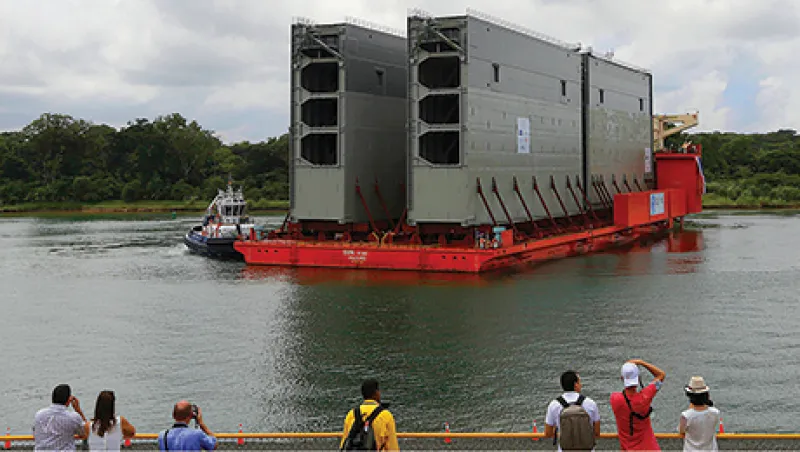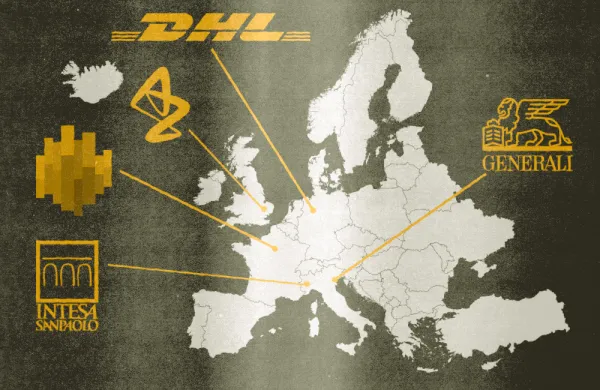Panama had planned to celebrate the centennial of its famous canal this August by completing a five-year, $5.2 billion expansion of the waterway, doubling its shipping capacity. Instead, the project has been delayed by at least a year because of a contract dispute between the Panama Canal Authority and a consortium of construction companies led by Spain’s Sacyr.
The consortium, known as Grupo Unidos por el Canal, or GUPC, includes Italy’s Salini Impregilo, Belgium’s Jan De Nul and Panama’s Constructora Urbana. It won the contract with a bid of $3.2 billion in 2009; the Panamanian government agreed to contribute the remaining $2 billion.
According to U.S. embassy cables disclosed by WikiLeaks and published by Spanish newspaper El País on January 2, the losing U.S. bidder, Bechtel Corp., predicted GUPC would not be able to complete the expansion within budget. An embassy cable dated October 24, 2008, quoted Michael Adams, then president of Bechtel’s global civil business and now CFO, as saying that a “lowball strategy” pursued by GUPC was made “with the intention of securing the contract and [then attempting] to renegotiate the price during construction.”
As if following that script, GUPC began warning the Panamanian government last fall that it was running out of funds. In January, with the canal expansion about 70 percent complete, GUPC reduced operations by 75 percent, idling more than half of the project’s 10,000 workers, and insisted it needed a further $1.6 billion because of cost overruns, including higher-than-expected prices for concrete.
The contract calls for disputes over cost overruns to be decided by arbitration. Panama contends that work should proceed in the meantime, but GUPC says it doesn’t have the funds to keep working. The contractors need to pour 900,000 cubic meters of concrete, out of a total 4.4 million, and install 12 of the 16 gates in the new locks that are being constructed at the Caribbean and Pacific ends of the canal.
“Rain, thunder or lightning, the expansion work on the canal will be completed,” President Ricardo Martinelli said recently. But at what cost? Alberto Alemán, former head of the Panama Canal Authority, says that in the best scenario GUPC would resume work, complete the expansion by the end of 2015 and agree to file claims for further compensation afterward. “In the worst case GUPC quits and we have to find another contractor to finish the project,” he says. “That means a long delay, higher costs and a lot of lawsuits.”
The canal has continued to function normally throughout the dispute. The delay, however, will cost the government $230 million to $400 million a year in additional revenue that the expansion was projected to generate. Currently, the canal provides more than $1.1 billion a year in revenue to the Treasury, or about 10 percent of the government’s budget.
GUPC has substantial leverage in the contract dispute: Half of the 16 gates that are to be installed in the project’s new locks are still under construction in Italy, with four due to be finished this month and the remainder in June.
Panama Canal administrator Jorge Quijano has rejected the contractors’ claims, maintaining that GUPC should “respect the contract they agreed to and signed.” The canal authority says it is negotiating directly with the Italian subcontractor Cimolai Holding to assure delivery of the gates, but it remains to be seen whether the engineering company will cooperate with the authority or side with its Italian client, Salini Impregilo.
Panama has plenty of leverage of its own in the dispute. It could ask the project’s insurer, Zurich North America, to end its contract with GUPC and turn over to Panama the $400 million bond behind the policy. In addition, Sacyr needs the contract to build its international reputation: The Spanish lead contractor has been looking to expand abroad to compensate for the collapse of construction activity in its domestic market.
The Panama Canal has been losing market share because of the growth of massive container ships too big for its locks; the expansion project is essential to keep the canal competitive into its second century. The enlarged waterway will allow the passage of ships as wide as 160 feet and as long as 1,206 feet, carrying as many as 12,000 containers. That compares with the current limits of 106 feet in width, 965 feet in length and 5,000 containers. The expanded canal is projected to double Panama’s share of global shipping, to 8 percent, by 2025.
Meanwhile, multibillion-dollar investments have been made both in Panama and abroad to accommodate larger ships, including bulk carriers that now bypass the canal. “There will be coal and liquid natural gas from the U.S. going to Asia and soybeans and iron ore from Brazil to China,” says Carlos Urriola, vice president of Manzanillo International Terminal, a big container terminal on the canal’s Caribbean side owned by Seattle-based SSA Marine. Ports in New Jersey, Maryland, South Carolina, Georgia and Florida are being dredged and modernized to receive the larger vessels that the expanded canal will accommodate.
The expansion should also bolster the growth of the logistics and distribution business in Panama. Whereas most ships used to transit the canal without stopping, these days more trips resemble the recent passage of the Hanjin Kingston: On January 20 the 40,487-ton, Panamanian-flagged ship picked up some 2,000 containers at a marine terminal on the Caribbean side of the canal, where they had been deposited by a number of different vessels; the ship then crossed the canal in eight hours and proceeded to take its cargo to the Siberian port of Nakhodka in Russia.
See also “Panama’s Investment and Banking Boom.”






